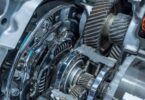Inspecting screws in a used car may seem like a small and insignificant task, but it is actually of utmost importance. The screws in a car play a crucial role in holding various components together, ensuring the safety and performance of the vehicle. Over time, screws can become loose, worn out, or damaged, which can lead to serious consequences if not addressed. In this article, we will explore why inspecting screws in a used car is important and the different types of screws found in a car.
Why Inspecting Screws in a Used Car is Important
Because faulty screws can pose potential dangers while driving. Loose or missing screws can cause components to become unstable or detach from the vehicle, leading to accidents or damage to other parts of the car. For example, if the screws holding the brake calipers in place are loose, it can result in reduced braking performance or even brake failure. Similarly, if the screws securing the wheels are not tightened properly, it can lead to wheel wobbling or detachment while driving.
Inspecting screws in a used car can also prevent costly repairs down the line. By identifying and addressing any issues with screws early on, you can prevent further damage to other components that may be affected by loose or faulty screws. For instance, if the screws holding the engine cover are loose, it can result in increased vibration and wear on the engine. This can lead to more serious engine problems and expensive repairs if not addressed promptly.
The Different Types of Screws Found in a Car
Cars are made up of various components, each requiring different types of screws for assembly. Here are some of the different types of screws commonly found in a car:
1. Machine screws: These screws have a uniform diameter and are used to hold metal parts together. They typically have a flat or round head and require a screwdriver or wrench for tightening.
2. Self-tapping screws: These screws have a sharp point and are used to create their own threads in materials such as plastic or sheet metal. They are commonly used in interior panels, trim pieces, and electrical components.
3. Hex bolts: These screws have a hexagonal head and are used for heavy-duty applications, such as securing engine components or suspension parts. They require a socket wrench or spanner for tightening.
4. Torx screws: These screws have a star-shaped head and are commonly used in electronic components, interior panels, and some engine parts. They require a special Torx screwdriver or bit for tightening.
5. Phillips screws: These screws have a cross-shaped recess on the head and are widely used in various applications throughout the car. They require a Phillips screwdriver for tightening.
6. Allen screws: These screws have a hexagonal recess on the head and are commonly used in engine components, suspension parts, and other areas where high torque is required. They require an Allen key or wrench for tightening.
Tools Needed for Inspecting Screws
To inspect the screws in a used car, you will need the following tools:
1. Screwdriver set: A set of screwdrivers with different sizes and types of heads will allow you to tighten or loosen various types of screws.
2. Socket wrench set: A set of socket wrenches with different sizes will enable you to tighten or loosen hex bolts and other screws that require a socket.
3. Torque wrench: A torque wrench is essential for tightening screws to the correct torque specifications. This is especially important for critical components such as engine parts or suspension components.
4. Allen key set: An Allen key set with different sizes will allow you to tighten or loosen Allen screws.
5. Inspection mirror: An inspection mirror will help you see hard-to-reach screws and inspect them for any signs of wear or damage.
6. Flashlight: A flashlight will provide additional lighting when inspecting screws in dimly lit areas of the car.
A Step-by-Step Guide to Inspecting Screws
Inspecting screws in a used car can be done by following these steps:
1. Park the car on a level surface and engage the parking brake for safety.
2. Open the hood and locate the screws holding various components in place, such as the engine cover, air filter housing, or battery terminals.
3. Use a screwdriver or socket wrench to check the tightness of these screws. If any are loose, tighten them to the recommended torque specifications.
4. Inspect the screws for any signs of wear, damage, or corrosion. Look for stripped threads, rust, or any other abnormalities that may affect their performance.
5. Move to the interior of the car and inspect the screws holding the dashboard, center console, or door panels in place. Check their tightness and condition.
6. Use an inspection mirror and flashlight to inspect hard-to-reach screws underneath the car, such as those securing the exhaust system or suspension components.
7. Inspect the screws on the wheels and ensure they are tightened to the recommended torque specifications. Check for any signs of wear or damage on the wheel studs or lug nuts.
8. Finally, inspect any other visible screws throughout the car, such as those on exterior trim pieces or electrical components.
Signs of Wear and Tear on Screws
During an inspection, it is important to look for signs of wear and tear on screws. Here are some common signs to watch out for:
1. Stripped threads: If the threads on a screw are worn or damaged, it may not provide a secure hold. Look for signs of stripped threads, such as visible wear or difficulty in tightening or loosening the screw.
2. Rust or corrosion: Screws exposed to moisture or harsh conditions can develop rust or corrosion. This can weaken the screw and affect its ability to hold components together. Look for any signs of rust or corrosion on the screws.
3. Loose screws: If a screw is loose and easily turns without resistance, it may need to be tightened or replaced. Loose screws can lead to instability or detachment of components.
4. Damaged heads: If the head of a screw is damaged or worn, it may be difficult to tighten or loosen properly. Look for any signs of damage on the heads of screws.
5. Missing screws: If a component appears to be loose or unstable, check if any screws are missing. Missing screws can compromise the safety and performance of the vehicle.
Common Issues Found on Screws in a Used Car
During an inspection, you may come across common issues found on screws in a used car. Some of these issues include:
1. Loose screws: Over time, screws can become loose due to vibrations or inadequate tightening during assembly. This can lead to instability or detachment of components.
2. Stripped threads: If a screw is repeatedly tightened and loosened, the threads can become worn or stripped. This can result in a loose connection and compromised safety.
3. Rust or corrosion: Screws exposed to moisture or harsh conditions can develop rust or corrosion. This can weaken the screw and affect its ability to hold components together.
4. Damaged heads: If the head of a screw is damaged or worn, it may be difficult to tighten or loosen properly. This can lead to improper assembly or disassembly of components.
5. Missing screws: Over time, screws can become lost or misplaced during repairs or maintenance. Missing screws can compromise the safety and performance of the vehicle.
How to Determine if Screws Need to be Replaced
Determining if screws need to be replaced during an inspection can be done by considering the following factors:
1. Condition of the screw: If a screw shows signs of wear, damage, or corrosion, it may need to be replaced. A damaged screw may not provide a secure hold and can compromise the safety and performance of the vehicle.
2. Tightness of the screw: If a screw is loose and cannot be tightened properly, it may need to be replaced. A loose screw can lead to instability or detachment of components.
3. Stripped threads: If the threads on a screw are stripped or worn, it may not provide a secure hold. In such cases, the screw should be replaced to ensure proper assembly and safety.
4. Manufacturer’s recommendations: Consult the car’s manual or contact the manufacturer for any specific recommendations regarding the replacement of screws. Some screws may have a limited lifespan and require periodic replacement.
Importance of Regular Screw Maintenance
Regular screw maintenance is important for ensuring the safety and performance of a car. By inspecting and maintaining screws on a regular basis, you can prevent issues such as loose or missing screws, stripped threads, rust or corrosion, and damaged heads. Regular maintenance allows you to identify and address any issues with screws early on, preventing further damage to other components that may be affected by faulty screws.
Regular screw maintenance also helps prolong the life of screws and prevents costly repairs down the line. By keeping screws tightened to the recommended torque specifications and addressing any signs of wear or damage promptly, you can ensure that components remain securely fastened and functioning properly.
Tips for Preventing Screw Damage in a cCar
To prevent screw damage in a car, consider the following tips:
1. Follow the manufacturer’s recommendations: Adhere to the manufacturer’s recommendations regarding the torque specifications for screws and any specific maintenance intervals or replacement schedules.
2. Use the correct tools: Always use the correct tools, such as screwdrivers or wrenches, when working with screws. Using the wrong tools can damage the screws or strip the threads.
3. Avoid over-tightening: Over-tightening screws can lead to stripped threads or damage to components. Follow the recommended torque specifications to ensure proper tightening without causing damage.
4. Protect screws from moisture and corrosion: Apply a rust inhibitor or protective coating to screws exposed to moisture or harsh conditions. This will help prevent rust or corrosion and prolong the life of the screws.
5. Store spare screws properly: If you have spare screws for your car, store them in a dry and secure location to prevent rust or damage. Label them properly for easy identification when needed.
When to Seek Professional Help for Screw Inspections
While inspecting screws in a used car can be done by car owners themselves, there are certain situations where it is necessary to seek professional help:
1. Lack of experience or knowledge: If you are unsure about how to properly inspect screws or lack the necessary knowledge and experience, it is best to seek professional help. A qualified mechanic or technician will have the expertise to identify any issues with screws and address them appropriately.
2. Complex repairs or replacements: If you come across complex repairs or replacements involving screws, such as those related to the engine, suspension, or electrical components, it is advisable to consult a professional. These areas require specialized knowledge and tools for proper inspection and repair.
3. Safety concerns: If you suspect any safety concerns related to screws, such as loose or missing screws that may affect critical components, it is important to seek professional help immediately. A professional inspection will ensure that the necessary repairs or replacements are done correctly and safely.
Inspecting screws in a used car is an important task that should not be overlooked. Faulty screws can pose potential dangers while driving and lead to costly repairs if not addressed promptly. By regularly inspecting screws, car owners can ensure the safety and performance of their vehicles. It is important to use the correct tools, follow the manufacturer’s recommendations, and seek professional help when needed. By taking these steps, car owners can prolong the life of their screws and prevent issues that may arise from loose or faulty screws. Regular screw maintenance should be a part of every car owner’s routine to ensure the safety and longevity of their vehicle.








